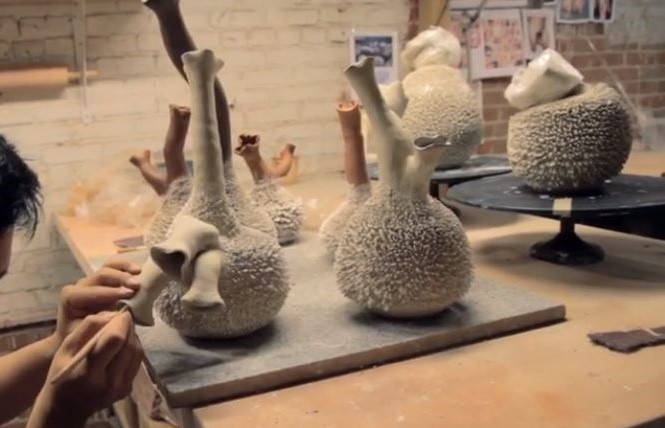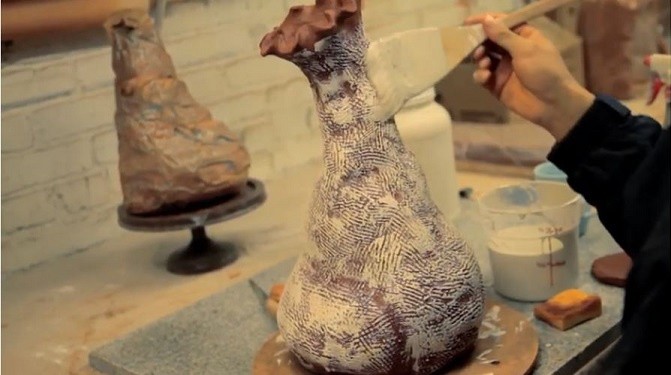The sibling artists Simon and Nikolai Haas have just graced the world once again with a line of artworks that speaks volumes. Their series of other-worldly porcelain sculptures features a new technique in the art of firing clay. The Accretion Series, a menagerie of bulbous porcelain sculptural vases, was named after the new technique for sculpting clay developed by the Haas brothers. The fur-like outgrowths, which could be likened to tiny tentacles or thick short filaments, were made with layers upon layers of wet brush strokes over dry clay.Each piece in the series had a different color, with some pieces featuring a golden antenna or a trunk, while others featured an opening. The porcelain sculptures resemble deep-sea creatures with bulb-like bodies covered in thick short filament protuberances.

The Haas twins recounted their production technique in a video showing they started with the base shape from their sketches to several pounds of clay. Once the base shape was achieved, the piece was scored and left to dry. Later, thin layers of wet clay were brushed onto the surface. With each layer left to dry before applying the next, Simon Haas explained that each layer adds about 0.1mm of length to the tiny tentacles, it could take up to a month for 5,000 to 10,000 layers to be done.
Haas explained that their work mimics the sedimentary growth patterns of stony corals and tree fungi. He later added that the repetitive process of layering will gradually result in a certain shape, taking, for example, the dips that form on stone stairs or the various cave formations that are shaped by years and years' worth of dripping water. Haas stated that their accretion technique was a product of their curiosity on the effects of repeated wet brush strokes on dry clay.

According to Haas, the colored gradients were created using custom clay slips, a liquified suspension of clay. The porcelain is then brushed onto each piece with the strokes starting at the base and ending at the top. Each layer is left to dry slightly before the next layer is brushed on. The clay sculptures will then be turned over to a three-part firing process. Clear glaze is applied in between rounds. Some of the pieces in the Accretion Series are finished off with a touch of gold luster at the tip of each tiny tentacle.

The Accretion Series is a collection of 45 pieces of chunky sculptures, specially made for London's Frieze Art Fair. The larger pieces in the series have varying heights of around one meter. According to the Haas brothers, their current series embodies something irresistible to touch yet too fragile to be touched. The large and unusual shape with openings placed in a different spot for every piece evokes something functional, a vase, and yet is impossible to use. Haas added that these opposing factors produce an interesting type of tension, adding more intrigue to each piece.
© 2025 ScienceTimes.com All rights reserved. Do not reproduce without permission. The window to the world of Science Times.











